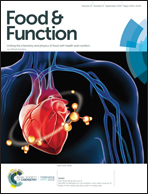 “Δ9-Tetrahydrocannabinol-valine-hemisuccinate, a hydrophilic prodrug of Δ9-tetrahydrocannabinol, synthesized with the aim of improving the ocular bioavailability of the parent molecule, was investigated in a lipid-based nanoparticle dosage form for ocular delivery.
“Δ9-Tetrahydrocannabinol-valine-hemisuccinate, a hydrophilic prodrug of Δ9-tetrahydrocannabinol, synthesized with the aim of improving the ocular bioavailability of the parent molecule, was investigated in a lipid-based nanoparticle dosage form for ocular delivery.
RESULTS:
A peak intraocular pressure (IOP) drop of 30% from baseline was observed in rabbits treated with SLNs loaded with Δ9-tetrahydrocannabinol-valine-hemisuccinate at 90 minutes. Treated eyes of rabbits receiving Δ9-tetrahydrocannabinol-valine-hemisuccinate SLNs had significantly lower IOP than untreated eyes until 360 minutes, whereas the group receiving the emulsion formulation showed a drop in IOP until 90 minutes only. In comparison to marketed pilocarpine and timolol maleate ophthalmic solutions, Δ9-tetrahydrocannabinol-valine-hemisuccinate SLNs produced a greater effect on IOP in terms of both intensity and duration. In terms of tissue concentrations, significantly higher concentrations of Δ9-tetrahydrocannabinol-valine-hemisuccinate were observed in iris-ciliary bodies and retina-choroid with SLNs.
CONCLUSION:
Δ9-Tetrahydrocannabinol-valine-hemisuccinate formulated in a lipid-based nanoparticulate carrier shows promise in glaucoma pharmacotherapy.
TRANSLATIONAL RELEVANCE:
Glaucoma therapies usually focus on decreased aqueous humor production and increased outflow. However, such therapy is not curative, and there lies a need in preclinical research to focus efforts on agents that not only affect the aqueous humor dynamics but also provide neuroprotection. Historically, there have been bench-scale studies looking at retinal ganglion cell death post-axonal injury. However, for a smooth translation of this in vitro activity to the clinic, animal models examining IOP reduction, i.e., connecting the neuroprotective activity to a measurable outcome in glaucoma management (IOP), need to be investigated. This study investigated the IOP reduction efficacy of cannabinoids for glaucoma pharmacotherapy in a normotensive rabbit model, bringing forth a new class of agents with the potential of IOP reduction and improved permeation to the back of the eye, possibly providing neuroprotective benefits in glaucoma management.”
https://www.ncbi.nlm.nih.gov/pubmed/31588378

 “Hemp (
“Hemp ( “HIV-associated neurocognitive disorder (HAND) affects nearly half of all HIV-infected individuals. Synaptodendritic damage correlates with neurocognitive decline in HAND, and many studies have demonstrated that HIV-induced neuronal injury results from excitotoxic and inflammatory mechanisms.
“HIV-associated neurocognitive disorder (HAND) affects nearly half of all HIV-infected individuals. Synaptodendritic damage correlates with neurocognitive decline in HAND, and many studies have demonstrated that HIV-induced neuronal injury results from excitotoxic and inflammatory mechanisms.
 “The neurodegeneration, neuro-inflammation and mitochondrial dysfunction which occur by methamphetamine (METH) abuse or administration are serious and motivation therapeutic approaches for inhibition of these types of neurodegeneration. As we know, METH through Toll-like receptors (TLRs), specially type 4, and NF-κB signaling pathway causes neuro-inflammation and mitochondrial dysfunction.
“The neurodegeneration, neuro-inflammation and mitochondrial dysfunction which occur by methamphetamine (METH) abuse or administration are serious and motivation therapeutic approaches for inhibition of these types of neurodegeneration. As we know, METH through Toll-like receptors (TLRs), specially type 4, and NF-κB signaling pathway causes neuro-inflammation and mitochondrial dysfunction. “Given their anti-inflammatory properties, cannabinoids have been shown to be neuroprotective agents and to reduce excitotoxicity, through the activation of the Cannabinoid receptor type 1 (CB1r).
“Given their anti-inflammatory properties, cannabinoids have been shown to be neuroprotective agents and to reduce excitotoxicity, through the activation of the Cannabinoid receptor type 1 (CB1r). “As the survival of preterm infants has increased significantly, germinal matrix hemorrhage (GMH) has become an important public health issue. Nevertheless, treatment strategies for the direct neuronal injury are still scarce. The present study aims to analyze the neuroprotective properties of
“As the survival of preterm infants has increased significantly, germinal matrix hemorrhage (GMH) has become an important public health issue. Nevertheless, treatment strategies for the direct neuronal injury are still scarce. The present study aims to analyze the neuroprotective properties of 
